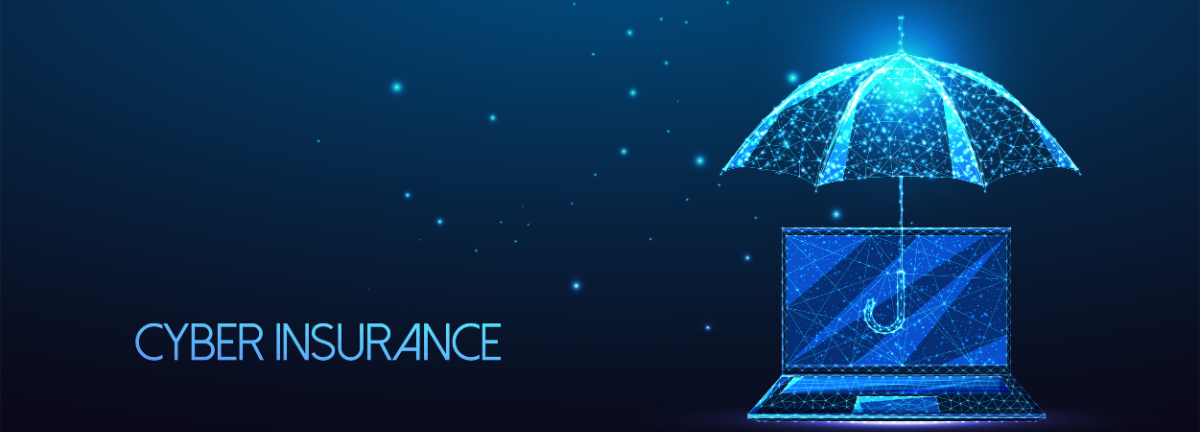Gone are the days where bad actors only target massive enterprises in hopes of a large payout. In recent years, it seems cybercriminals have become less choosy about their targets, making cyber insurance a necessity for businesses of all sizes. Let’s look deeper into cyber insurance, why it’s essential, the intricacies of securing coverage, and practical tips for successfully maneuvering through the insurance process.
Managing Cybersecurity Risk – Three Options
Accept Risk – Acknowledge the risk and choose not to mitigate or transfer
Mitigating Risk – Avoid or reduce the likelihood or impact of risk
Transferring Risk – Assign or move the risk to a third-party via Cyber Liability Insurance
The Basics of Cyber Insurance
Why Have Cyber Insurance
Cyber insurance, or cyber liability insurance, stands as a buffer against the financial devastation that cyber incidents can wreak. Risk is transferred to an insurer (underwriter, broker, or guarantor) for a fee or premium, subject to specific terms and conditions. It offers four cornerstone benefits:
1. Financial Protection
Covers the costs arising from cyber incidents, shielding your business from unexpected financial strain.
2. Commercial Necessity
For many organizations, having cyber insurance is a prerequisite for establishing business relationships, acting as a trust signal to partners.
3. Operational Support
Provides immediate access to a team of experts, including IT forensics specialists and privacy lawyers, ensuring a swift and competent response to incidents.
4. Peace of Mind
Assures customers, partners, and employees of your preparedness, enhancing confidence in your business’s resilience.
Causes of Cyber Insurance Claims
The leading causes of claims include ransomware attacks, business email compromise (BEC), hackers, theft of money, and staff mistakes.
What Cyber Insurance Covers
Cyber insurance policies typically cover business interruption costs, forensic analysis, ransom demands, legal fees, and more. It’s crucial to note the distinction between first-party coverage, which pertains to direct costs incurred by the insured party, and third-party coverage, which relates to costs stemming from lawsuits against the insured party.
The Realities of Cyber Insurance
Prevalence and Adoption
A staggering 91% of organizations had some form of cyber insurance in 2023. This widespread adoption underscores the growing recognition of cyber threats and the essential role of insurance in mitigating these risks. However, the landscape is nuanced, with coverage levels and policy specifics varying significantly across sectors and revenue sizes.
Drivers of Cyber Insurance Sales
The primary motivators for purchasing cyber insurance include witnessing or experiencing cyber losses, third-party requirements in business engagements, and directives from board members or senior management. These drivers highlight the integral role of cyber insurance in modern business strategy and risk management.
The Cost of Cyber Insurance
Several factors influence the cost of cyber insurance, including the size and sector of the business, potential exposure to cyber threats, the organization’s cybersecurity posture, and any history of previous claims. Understanding these variables can help businesses better navigate the insurance procurement process.
The Cyber Insurance Market
Market Conditions
The cyber insurance market has transitioned from a “soft” market to a “hardened” market, marked by increased premiums and stricter coverage criteria. This shift reflects the rising volume and complexity of cyberattacks and the heightened costs associated with recovering from such incidents.
Cyber Insurance Payouts
Despite the hardening market, most insured businesses that have suffered cyberattacks report receiving payouts from their insurers. This high rate of claims approval provides reassurance that cyber insurance is a reliable safety net.
Improving Cyber Defenses for Better Insurance Outcomes
In response to the harder market, businesses are taking proactive steps to strengthen their cyber defenses. Implementing robust cybersecurity measures not only enhances an organization’s resilience to cyber threats but can also lead to more favorable insurance terms, including lower premiums and improved coverage options.
Simplifying Your Cyber Insurance Journey
Navigating the Hardened Market
To successfully secure cyber insurance in today’s market, businesses need to demonstrate a high level of cybersecurity readiness. Insurers are increasingly evaluating potential clients’ cyber defenses, looking for comprehensive measures like multi-factor authentication (MFA), endpoint detection and response (EDR), and managed detection and response (MDR) services.
Maximizing Your Coverage
Choosing the right level of cyber insurance coverage is a balancing act. Organizations must assess their specific risks and potential exposure to determine the coverage that best aligns with their needs. This assessment should consider the data handled, the size and complexity of the business, and the potential financial impact of a cyber incident.
Leveraging Cybersecurity for Better Rates
Investing in advanced cybersecurity technologies and practices can have a direct impact on your cyber insurance premiums. Measures like MFA (Multi-Factor Authentication), MDR (Managed Detection and Response), and having a comprehensive incident response plan not only reduce the likelihood of a successful cyberattack but also position your business as a lower-risk client in the eyes of insurers.
Work With a Trusted Partner
Navigating cyber insurance complexities? Deerwood Technologies is your go-to for guidance on cyber insurance and comprehensive IT services. With a focus on tailored strategies to meet your unique needs, we’re here to help your business thrive securely in the digital world. Contact us today for expert advice and solutions that ensure confidence and protection.

